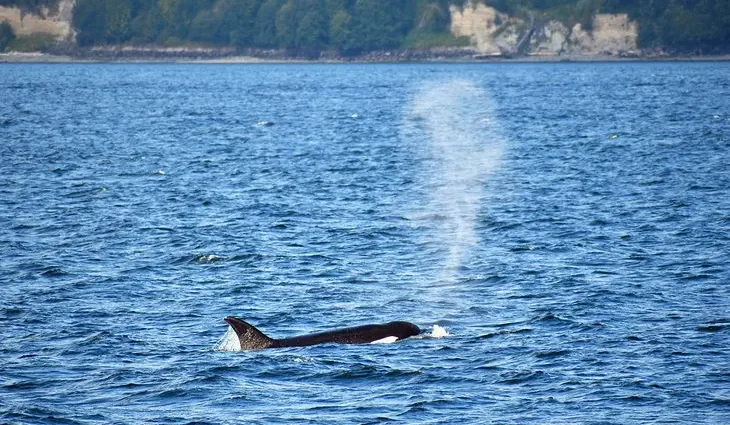Contents
- 1. Go Whale Watching
- 2. Explore the Wild Wonders of Moran State Park
- 3. Visit Both Camps at the San Juan Islands National Historical Park
- 4. Bring Binoculars to Lime Kiln Point State Park
- 5. Paddle Out to Sea
- 6. Shop and Dine in the San Juan Islands
- 7. Find Local Art to Enjoy
- 8. Hike at Turtleback Mountain Preserve
- 9. Attend a Farmers Market or Visit a Local Farm
- 10. Marvel at the Afterglow Vista Mausoleum
The San Juan Islands are a collection of over 170 islands off the northwest coast of Washington State. They are a vacation destination for several reasons, including the faraway feeling upon landing on their shores. Other notable attributes include a temperate weather forecast and pods of orcas that circle the water.
The three most populous islands, and the three most popular to visit, are San Juan Island, Orcas Island, and Lopez Island. Accordingly, these three islands have the most developed tourist attractions and places to visit. San Juan Island is home to the county seat, Friday Harbor, a common jumping-off point for multi-day trips.
Whichever island catches the eye, expect a slowed-down pace upon arriving. Despite being a short distance from the Seattle metropolitan area, the San Juan Islands feel worlds away from the hustle and bustle. Visitors beware, though. It’s hard to head back to any other way of living after getting a taste of the island life.
Find your own slice of island adventure with our list of the top things to do in the San Juan Islands.
1. Go Whale Watching
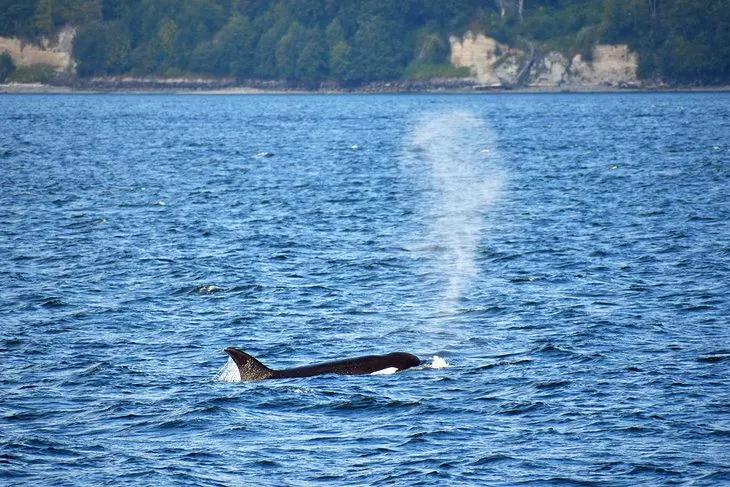
A major appeal of the San Juan Islands and the surrounding Salish Sea is the chance to see whales in the water. These magnificent mammals live in the region year-round, but the peak season for whale watching is between June and September.
Humpback, minke, and gray whales all make an appearance around the San Juan Islands. But the region is perhaps best known for its orcas, also known as killer whales. These black and white predators are not only awe-inspiring to see in the wild, but they hold significant cultural value in the region.
Visitors can spot whales from land at places like Lime Kiln Point State Park, also known as Whale Watch Park. But the best bet for whale sightings is taking a guided boat tour. And on San Juan Island and Orcas Island, several whale watching companies offer half- and full-day excursions.

The Whale Museum in Friday Harbor is an excellent place to visit before or after any whale watching trip. It offers historical and cultural insight into the surrounding whale populations. It also provides other insights with things like complete whale skeletons hanging from the ceiling.
The Whale Museum is open every day. All proceeds from admissions and the gift shop go towards the museum’s mission of protecting the Southern resident orcas.
Official site: https://whalemuseum.org/
2. Explore the Wild Wonders of Moran State Park
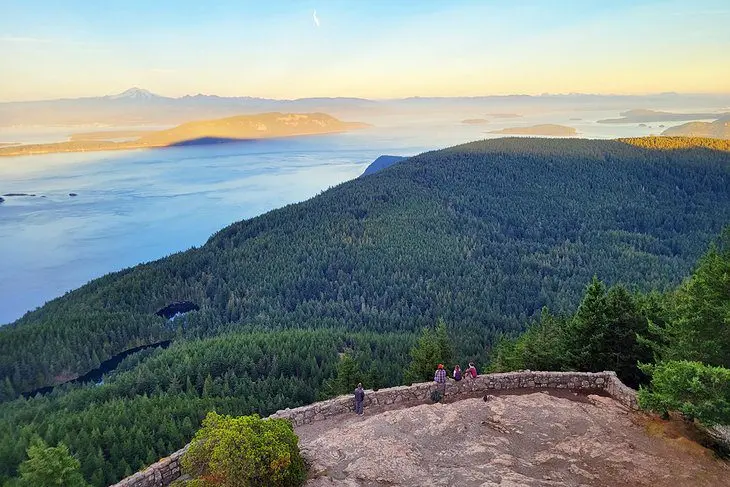
On the east side of Orcas Island, Moran State Park is a crown jewel natural space of the San Juan archipelago. It encompasses over 5,000 acres of wild terrain. These varied landscapes include five lakes, acres of verdant forests, and the highest point of the San Juan Islands: Mount Constitution.
The state park has over 130 campsites and over 30 miles of multi-use trails. The state park also facilitates non-motorized boating with launches on Mountain and Cascade Lakes. Boat rentals are available throughout the summer.
Moran State Park is worth the travel to Orcas Island alone. And when visiting, a must-do on Orcas Island is ascending to the top of Mount Constitution. Visitors can hike, ride a bicycle, or drive their car up to the approximately 2,400-foot peak. Here, the view includes Mount Baker looming to the east over the Salish sea dotted by islands.
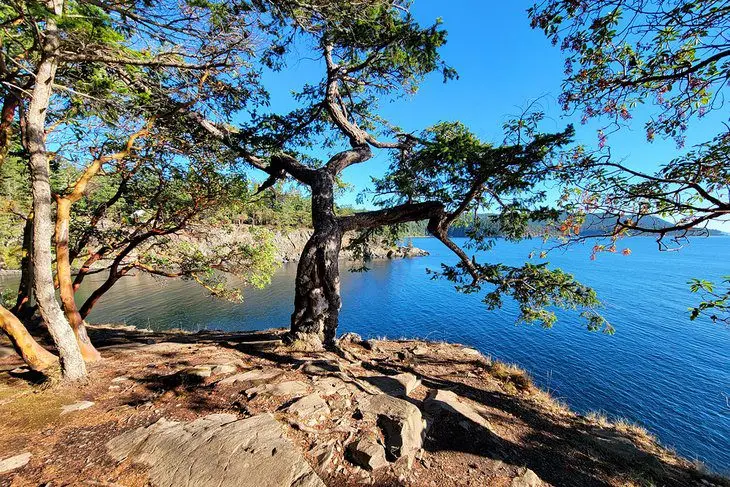
When in the area, it’s also worth checking out Obstruction Pass State Park, four miles south. This small state park offers one of the largest public saltwater shorelines on Orcas Island. Obstruction Pass also offers unique, primitive walk-in campsites close to the water.
Official Site: https://parks.state.wa.us/547/Moran
3. Visit Both Camps at the San Juan Islands National Historical Park
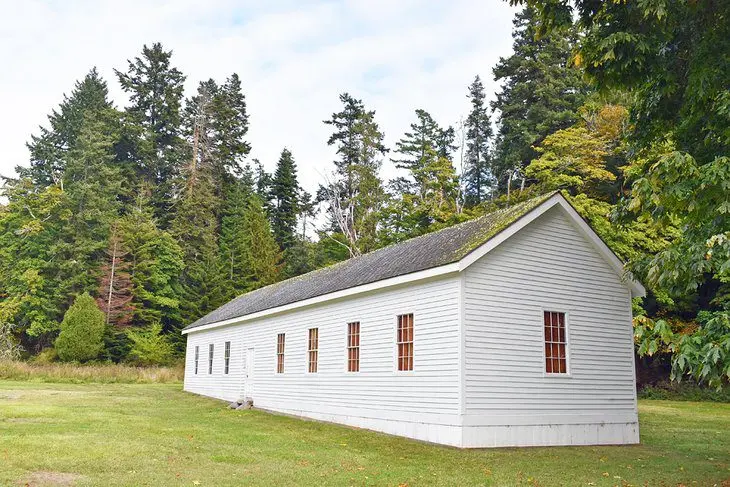
In the late 1850s, San Juan Island hosted a unique series of events in world history. The 1846 Treaty of Oregon established the boundary of the 49th parallel but left San Juan Island in ambiguous territory. This uncertainty led to an American Camp and an English Camp on the island. In 1859, the two camps nearly clashed over the death of a farm animal – an event known as “The Pig War.”
San Juan Islands National Historical Park encompasses the American Camp on the south side and the English Camp up north. And visitors should etch out time to visit both. Each camp has surviving structures that help paint the picture of 1850s camp life, and interpretive areas detail important events, including the eventual peaceful arbitration of The Pig War.
Both camps also present a dazzling island landscape to explore. The American Camp sits close to the ocean, with beach trails to follow. And the English Camp offers Garry oak forests to wander and high vantage points atop places like Young Hill. Plan to spend about two hours at either camp.

For an additional adventure, the Cattle Point Lighthouse is just a few miles south of the American Camp, on the very southern tip of San Juan Island. The ocean scene traveling to the lighthouse is dazzling on its own, and upon reaching this photogenic navigation aid, the lighthouse offers a perfect island snapshot.
Official site: https://www.nps.gov/sajh/index.htm
Read More: Top-Rated Things to Do in Friday Harbor
4. Bring Binoculars to Lime Kiln Point State Park
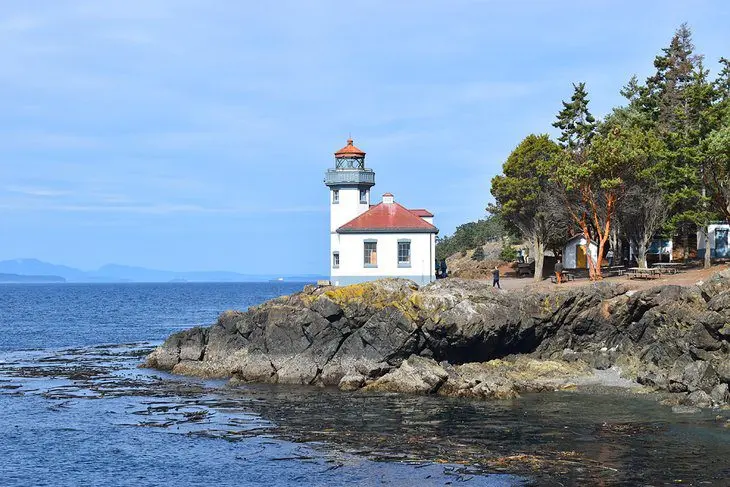
Lime Kiln Point State Park is on the west side of San Juan Island, accessible via the San Juan Islands Scenic Byway. It’s also known as Whale Watch Park, thanks to its magnificent saltwater vantage point. From the parking area at this day-use state park, it’s only a short walk to the rocky shoreline.
Picnic tables and interpretive information line the shoreline at Lime Kiln Point State Park. Here, bring a packed lunch and some binoculars to sit and enjoy the show. Interpretive information in this area helps identify the fins poking above the water. And several madrone trees and a dramatic coastline ensure stunning coastal beauty, even if no whales are present.
The Lime Kiln Lighthouse adds even more visual attraction to the state park. This active navigation aid poses brilliantly for photographs and is accessible with less than a quarter-mile walk. With several picnic tables all around, the lighthouse offers one of the best picnic spots on the San Juan Islands.
5. Paddle Out to Sea
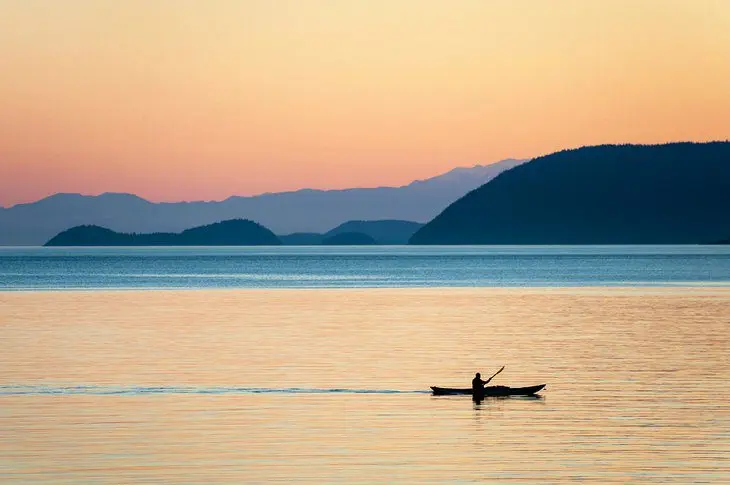
One of the best ways to experience the San Juan Islands is to get on the water and paddle around. Visitors can walk their non-motorized boats onto Washington State Ferries. Alternatively, the main islands have plenty of rentals.
Companies on San Juan Island and Orcas Island also offer several guided paddling trips. These guided adventures include whale watching expeditions, paddle and picnic tours, and gourmet kayak trips with first-class meals.
A few companies to look into on San Juan Island include Crystal Seas Kayaking, San Juan Kayak Expeditions, and Discovery Sea Kayaks. On Orcas Island, outfitters like Shearwater Kayak Tours and Outer Island Excursions have long track records of memorable trips. And Lopez Kayaks is the place to go on Lopez Island.
6. Shop and Dine in the San Juan Islands

Several small communities dot the San Juan Islands, offering a fresh taste of island life and local culture. One of the most visited is Friday Harbor on San Juan Island. This charming community greets visitors the moment they step off the ferry. Here, Spring Street stretches up a hill, with the branching side streets of the downtown district.
Friday Harbor is fun to wander for several reasons. This downtown corridor caters to all the senses, with shops like the Pelindaba Lavender store and fresh-caught menus at local restaurants. And with places like The Whale Museum and San Juan Islands Museum of Art, it’s also a spot to gain valuable insight about the region.
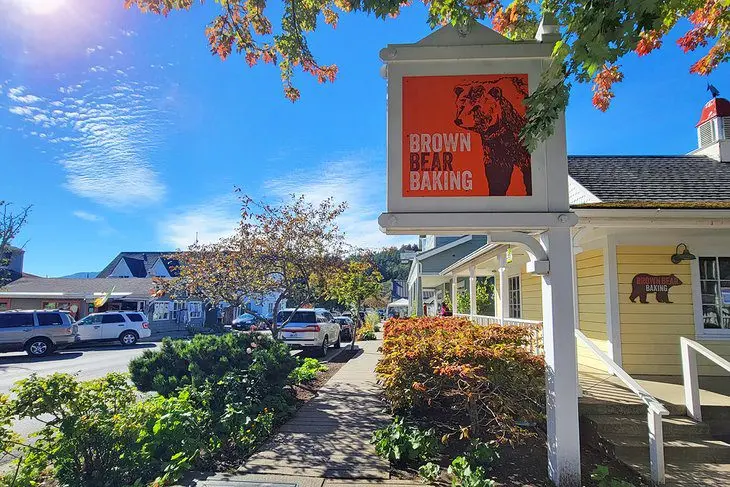
On Orcas Island, the central community hub is Eastsound Village. This historic community is in the middle of the island and offers the densest concentration of restaurants and shops. And it’s a lovely place to walk around and enjoy the temperate weather. For a picnic in the park, head to Eastsound Village Green Park, next to The Orcas Island Historical Museum.
7. Find Local Art to Enjoy

There’s something about the coastal atmosphere of the San Juan Islands that inspires eye-catching art. Throughout the archipelago, from city streets to old-growth forests, several artistic spaces offer an afternoon of perusing.
Both Friday Harbor and Eastsound Village have a collection of art galleries open to the public. And places like Island Studios, Arctic Raven Gallery, and Orcas Island Artworks all feature well-lit galleries and a multitude of art.
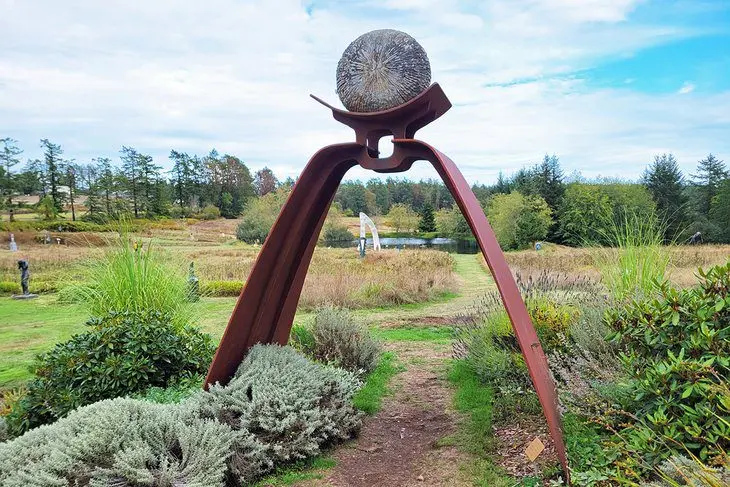
On San Juan’s north end, the San Juan Islands Sculpture Park & Nature Reserve offers one of the most engaging art spaces to explore. Here, over 150 for-sale sculptures punctuate the natural background on the far side of the island.
For more outdoor art, head to Orcas Island Pottery. This unique gallery is primarily outdoors, with different structures, like an artsy shed and an impressive treehouse, displaying the pottery made on-site.
8. Hike at Turtleback Mountain Preserve
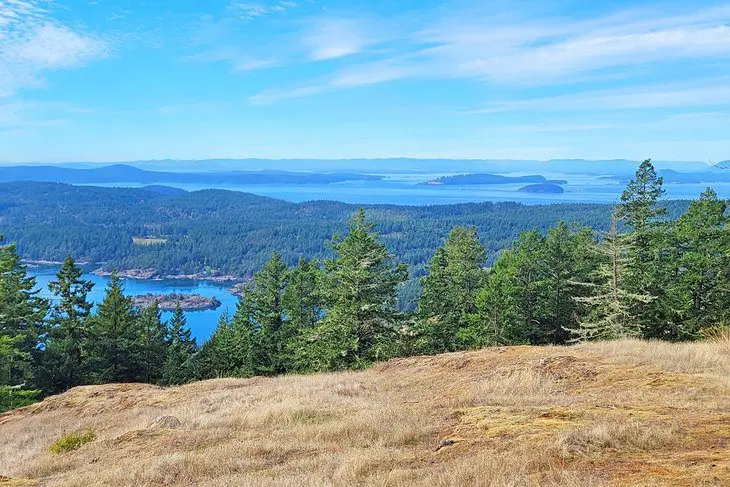
Turtleback Mountain is a quintessential hiking destination on Orcas Island. It’s on the island’s west side, with a southern trailhead less than five miles from the ferry terminal. This proximity to the ferry terminal makes it a popular trailhead to arrive by bicycle.
The San Juan Preservation Trust oversees all 1,578 acres of the preserve, including its eight-mile trail network. There’s a route that leads to the summit and connects the South and North Trailhead. But for the best views overlooking the water, consider hiking the Ship Peak Loop.
It’s a three-mile round trip on the Ship Peak Loop from the South Trailhead. Near the middle, dramatic overlooks of the Salish Sea soothe the sore legs acquired while hiking to the top. This vantage point is well worth the effort, and strategic benches offer a place to sit and take in the scene.
Official site: https://sjpt.org/visit-our-preserves/turtleback-mountain-conservation-easement/
9. Attend a Farmers Market or Visit a Local Farm
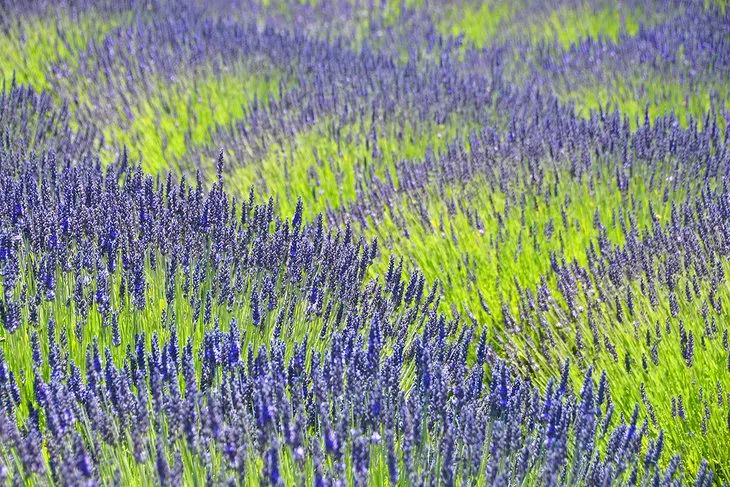
The San Juan Islands offer ample opportunity to bite into something crisp. Across the remote regions of the archipelago, private and public farms take advantage of the favorable growing conditions. And one of the best ways to fill a shopping bag is to attend an island farmers market.
San Juan Island, Orcas Island, and Lopez Island have farmers markets on Saturdays between May and September. The San Juan Island Farmers Market extends into March and October. At either three markets, expect rows of stalls and vendors displaying their fresh produce, handmade home goods, and a variety of hot foods.
The San Juan Islands is also home to some unique farm experiences. On San Juan Island, Pelindaba Lavender Farm is a popular place to visit, particularly in the peak bloom season between July and August. Nearby, Krystal Acres also offers a memorable experience upon meeting the resident alpaca herd.
10. Marvel at the Afterglow Vista Mausoleum
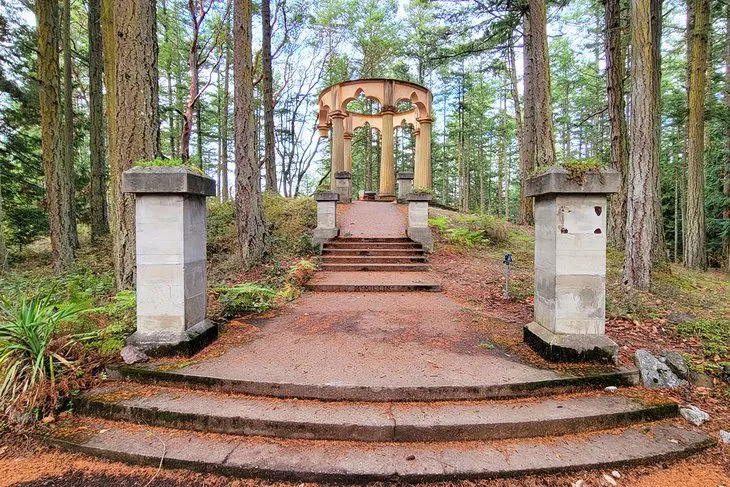
For a surreal side trip during the day, the Afterglow Vista Mausoleum on San Juan Island is worth the detour.
This family memorial is tucked into the forest on the island’s north side and dates to the 1930s. It contains the remains of John S. McMillin and his family. And stumbling across this detailed tomb inspires a sense of awe and wonder.
The designated parking area for the mausoleum is a few blocks from the San Juan Islands Sculpture Park and Roche Harbor Resort. From here, it’s a short walk through the scattered plots of the Roche Harbor Cemetery. Follow a few faded signs through the woods, and the mausoleum eventually stands out against the woodline.
Interpretive information greets visitors at the gate of the mausoleum, detailing its symbolic construction. It’s important to respect this visually appealing monument’s somber setting and limit your time if others are waiting. It’s open to the public as a courtesy, with no admission required.










